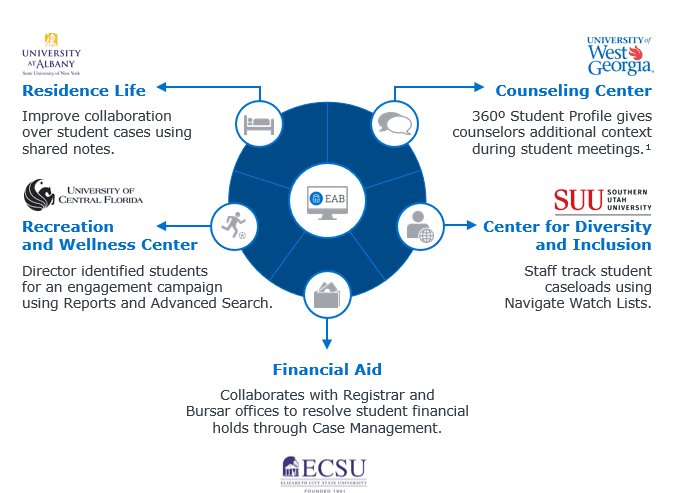Why a Coordinated Care Network may be the key to improving the student experience
May 24, 2019

I had minor surgery last month (don’t worry, I made a full recovery!). As a result, I’ve recently interacted with a whole host of medical professionals-from doctors and nurses to radiologists and pharmacists. As I made my way from one office to the next, I was struck by how infrequently I needed to explain who I was or why I was there, and by how coordinated all the different aspects of my care were.
The past few weeks taught me firsthand how important coordination is to the patient experience, and how much health care and insurance providers stand to lose if they don’t make it a priority.
The same goes for higher education. When student care is coordinated, students have a better experience. Conversely, as I’ve discovered through my research at EAB: uncoordinated care has major consequences. Instead of studying or participating in the college experience, students have to spend time navigating complex, inefficient, and bureaucratic processes. They feel lost, frustrated, or stuck.
So how can schools prevent students from feeling like they’re endlessly stuck in a “shuffle”?
It ensures the whole campus shares responsibility for student care
f we want to make students feel like they are cared for by their college or university, the first step is to ensure that they feel like everyone on their care team-advisors, faculty, coaches, tutors-are truly working together as a team.
To achieve this, responsibility for student care needs to be a shared institutional goal that goes beyond the advising office. Every person and unit involved in student success must be committed to connecting students with the resources necessary to succeed-not just the resources their office has. It can no longer be the norm for a coach or a faculty member to see that a student has a hold on their account and think, “that’s not something I can address” or “the student needs to see another office to resolve that.”
The ‘shuffle’ is a known thing around campus. Whether it’s financial aid, paying bills, pretty much anything, we get bounced from office to office just to get one question answered.
Student
A Coordinated Care Network allows students to receive help not just from the person they happen to meet with (usually their advisor), but from all of the people and offices suited to help them. Each frontline staff member is well-versed in the work of other departments and accountable to a unified vision of student success.
When George Mason University launched their new campus-wide student success initiative, Building the Ideal Student Experience, they created an infographic and used it in a PR campaign to spread awareness about their vision of coordinated care. Whenever any unit or individual is unsure what they should strive for or why it matters, they can reference this document as a reminder.
When staff can’t provide the appropriate response to a student because the scope of the student problem falls outside their role, they don’t just send students on their way. Instead, they proactively refer the student to the right support office. To make referrals even more effective, coaches or faculty members use technology, including case management, early alert, and appointment management tools, just as healthcare providers rely on technology to easily track progress when they refer patients to a specialist.
In recent years, we’ve seen countless examples of how various support units, including Residential Life, Financial Aid, Career Services, and Athletics, coordinate care and deliver high-quality student support using EAB’s Navigate technology.
How support units contribute to a Coordinated Care Network

It makes the experience seamless for the student
There’s nothing more frustrating than having to tell your story over and over to get the help you need, and colleges are often guilty of putting students in this position. It’s easy to understand why many students feel frustrated trying to gather information from separate and often isolated departments, and why some would simply give up on trying to resolve whatever issue they had.
In a Coordinated Care Network, staff have technology and processes in place to share information with one another, saving them from having to repeatedly ask students, “Why are you here, and where have you already been?” Like the electronic health records my health care providers used, a centralized student data center enables staff to more easily understand the whole picture when they meet with a student. They do this by accessing a shared log of all interactions and shared staff notes.
To make it easier for students to make their way to the right office, schools like MSU Denver and James Madison University have begun to co-locate multiple services within a single location. Our members take it one step further by offering students a technology platform where they can access a resource directory, easily make appointments, and share information with members of their designated support network-a one-stop shop right on their phones. This kind of seamless experience is something students have come to expect.
When I share my recent surgery experience, people are surprised and tell me I’m lucky to have received health care that was truly coordinated. I hope that we can aspire to do better for our students, and that coordinated care becomes the norm.
More Blogs

What can we learn from first-year GPA?

What major switching can tell us about student outcomes
